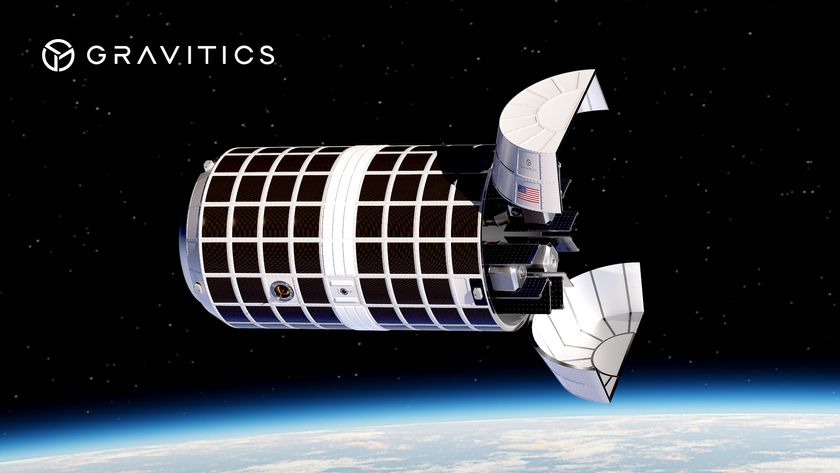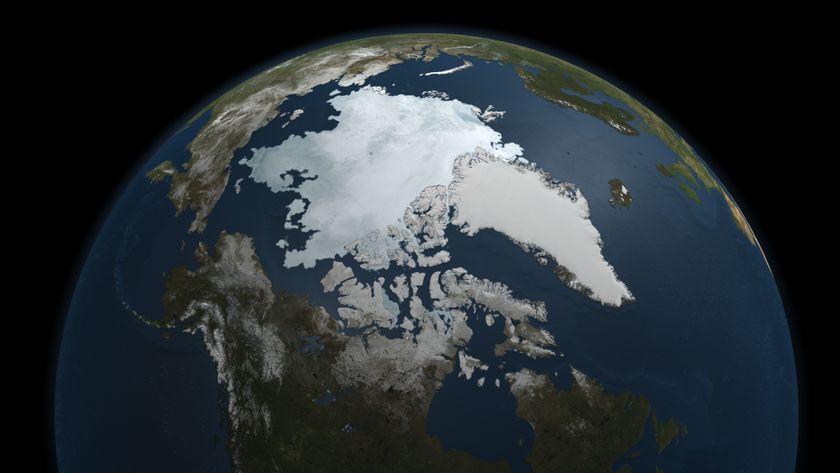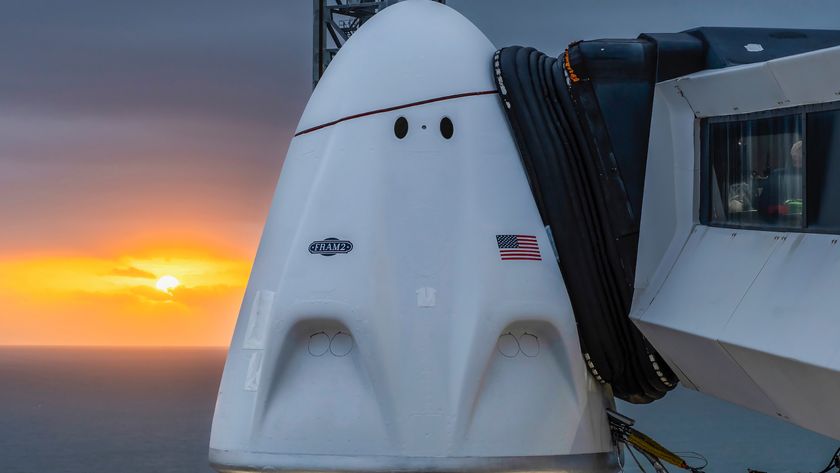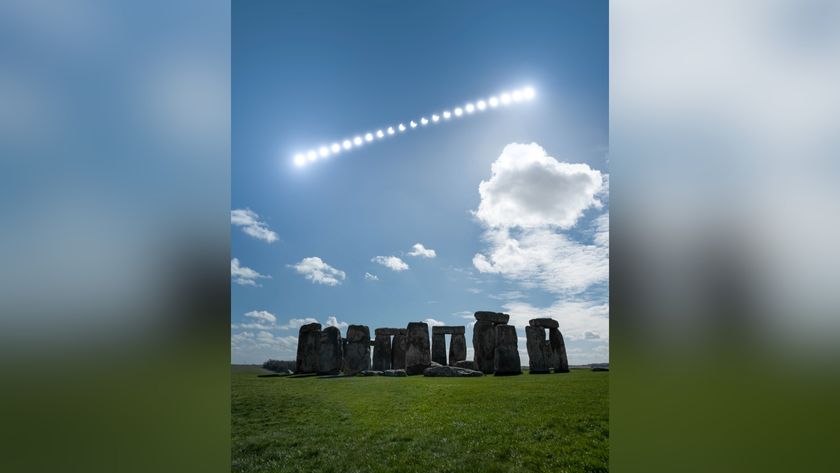White Christmas: The Coldest Places in the Solar System
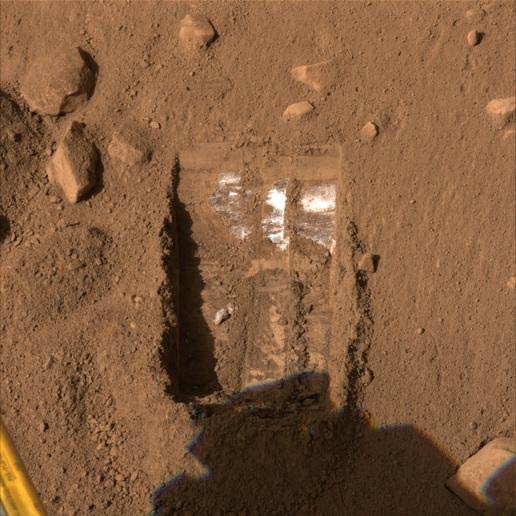
The shrinking ice cap around Earth’s North Pole may behedging in on Santa’s territory, but there are plenty of other frigidterritories in the solar system where he could set up shop. Here we tour ofsome of the most shiver-inducing spots in the solar system, where you might be assureda white Christmas.
Mars
If Santa is looking for another snowy spot for his workshop,the northern polar regions of Mars offers an out-of-this-world option. Lastyear, NASA’s Phoenix Mars lander observedsnow falling in Mars’ northern Vastitas Borealis region, where it landed onMay 25, 2008 to dig below the surface in search of water ice. Trenches dug bythe lander’s robotic arm did indeed expose subsurface ice, shedding more lighton the history of water on the red planet. In addition to the slight snowfalls,Phoenix observed frost forming on the Martian surface around it as winter beganto set in in the northern hemisphere – the lander is thought to have beencovered in ice and frost since NASA lost contact with it in November 2008.
Titan
Lakes of liquid methane and ethane are thought to dot thelandscape of this Saturnian moon, in an environment more frigid thanAntarctica. But despite its overall colder state, the wind, rains and tectonicprocesses on Titan make it one of the closestEarth analogs in the solar system, scientists say. While the satellite’saverage surface temperature of minus 292 degrees Fahrenheit (minus 180 Celsius)keeps water frozen solid, liquid methane and ethane exist and could provide ahaven for life.
Enceladus
Instead of precipitation raining down on its surface,Saturn’s chilly moon Enceladus has geysers of gaseous water that erupt on itssurface – a process called cryovolcanism. There is strongdebate over the exact composition of the planet and the plumes that spewfrom its surface. Some argue that the moon features any icy surface layer overa region of flowing water, while others argue that it is a frigid body of solidice and rock.
Get the Space.com Newsletter
Breaking space news, the latest updates on rocket launches, skywatching events and more!
Europa
Jupiter’s moon Europa is also an icy world, thought tofeature a surface veneer of water ice (at a temperature of almost minus 300degrees Fahrenheit, or minus 184 Celsius) with a possible liquid water oceanunderneath. The icy surface could be good for winter skating, as it is one ofthe smoothest in the solar system, marked by some cracks and streaks, but withrelatively few craters. But despite the icy crust and frigid surfacetemperatures, some scientists think that heat from the moon’s inner dynamo andthe tidal pull of Jupiter could keep the ocean warm enough to support life.
Comets
If the sleigh won’t cut it, Santa could always hitch a rideto a comet. These solar system bodies may not seem cold as they periodicallyblaze across the night sky, but they are actually collections of dust, waterice, and bits of rock. These “dirty snowballs,” as they are sometimes called,come from the outermost reaches of the solar system – the Kuiper Belt and theOort Cloud. They develop their telltale tail when their orbit brings them closeto the sun and the volatile materials in them are vaporized by solar radiation– but in the outer solar system, they remain frozen chunks of material leftfrom the formation of the solar system.
Uranus
The seventh planet from the sun and one of the solarsystem’s four gas giants, Uranus is sometimes put into a category called the“ice giants,” along with neighboring Neptune. Uranus’ atmosphere – made up ofhydrogen, helium, and water, ammonia and methane ices – is the coldest of anyplanet in the solar system, with a lowest temperature of minus 371 degreesFahrenheit (minus 224 degrees Celsius).
Pluto
Earlier this year, scientists determined that Pluto’s atmosphereis warmer than previously thought, warm being a relative term. The air overthe dwarf planet’s surface is still a frigid -292 degrees Fahrenheit (-180degrees Celsius), while its face is -364 degrees Fahrenheit (-220 degreesCelsius). Since its demotion from planet status in 2006, Pluto has been groupedin with a class of bodies known as Kuiper Belt objects that extend out to adistance of 100 times that from the sun to the Earth.
Space itself
While all the worlds above are much chillier than any placeon Earth, one of the coldest spots in space is space itself. The cosmicmicrowave background radiation that permeates the universe (and is the remnantenergy of the theoretical Big Bang) has a temperature of 2.725 degrees Kelvin –that’s minus 455 degrees Fahrenheit, or minus 270 degrees Celsius. Might wantto install a heater on that sleigh…
Planck spacecraft
The chilliest known spot in space isn’t an icy comet, oreven space itself, but is something man-made: the European Space Agency’s Planckspacecraft. On its way to its final orbiting point – where it will observethe remnant radiation of the theoretical Big Bang – the telescope cooled downto its operating temperature of minus 459.49 degrees Fahrenheit (minus 273.05Celsius). This temperature is just 0.1 Celsius above absolute zero, the coldesttemperature theoretically possible in our universe.
Moon’s polar craters
Paradoxically, the coldest (natural) place known in thesolar system isn’t some distant object orbiting in the icy Kuiper belt, butinstead lies much closer to the sun. In September, NASA’s new LunarReconnaissance Orbiter took the temperature of the permanently shadowed cratersat the moon’s south pole (where its companion LCROSS probe found waterice deposits after impacting one crater in October).? LRO’s instrumentsfound that the craters plunged the mercury to less than minus 397 degrees Fahrenheit(minus 238 Celsius) – colder even than the surface of far away Pluto. Betterpack some extra sweaters, Santa!
- The Wildest Weather in the Galaxy
- The Enduring Mysteries of the Outer Solar System
- Images: The New Solar System
Join our Space Forums to keep talking space on the latest missions, night sky and more! And if you have a news tip, correction or comment, let us know at: community@space.com.

Andrea Thompson is an associate editor at Scientific American, where she covers sustainability, energy and the environment. Prior to that, she was a senior writer covering climate science at Climate Central and a reporter and editor at Live Science, where she primarily covered Earth science and the environment. She holds a graduate degree in science health and environmental reporting from New York University, as well as a bachelor of science and and masters of science in atmospheric chemistry from the Georgia Institute of Technology.






